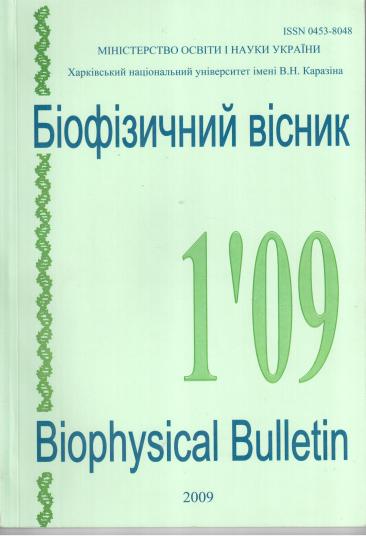The influence of random branch lengths of dendrites on the passive electrical structure of the neurons: model study
Abstract
The influence of random branch length of dendrites on the electrotonic (passive electrical) structure is shown by the computer models of the passive stochastic arborization. The electrotonic structure of models was computed as the arborization of somatopetal current transfer effectiveness profiles. The dendrites are considered as passive cables with zero leakage at the tip ("sealed-end" boundary condition). The models with the uniform in the interval and normal distribution of branch lengths showed that the distribution of the current transfer effectiveness becomes displaced to the side of smaller values. The criterion of resolving the dendritic branches by the effectiveness of somatopetal current transfer was described. The model of asymmetrical stochastic arborization showed both: the possibility to use this criterion to resolve the groups of branches and the characteristic changes of resolution conditions caused by changes of membrane resistivity.
Downloads
References
Hillman D.E. // In book: “The Neurosciences: Fourth Study Program.” –Cambridge, MA., MIT Press, 1979,
Chap.27, P.477–498.
Burke R.E., Marks W.M., Ulfhake B. // J. Neurosci. 1992. V.12(6). P. 2403–2416.
Ascoli G.A. // Anat. Rec. 1999. V.257(6). P.195–207.
Ascoli G.A., Krichmar J.L. et al. // Phil. Trans. R. Soc. Lond. B. 2001. V.356, P.1131–1145.
Ascoli G.A. // Network: Comput. Neural Syst. 2002. V.13. P.247–260.
Бондаренко Я.С. // Мат. маш. И сист. 2006. Т.1. С.13–27.
Donohue D.E., Ascoli G.A. // PLoS Comput. Biol. 2008. V.4(6). P.1–15.
Barrett J., Crill W. // J. Physiol. 1974. V.239. P.325–345.
Bras H., Gogan P., Tyč-Dumont S. // Neuroscience. 1987. V.22(3). P.947–970.
Hines M.L., Carnevale N.T. // Neural Comput. 1997. V.9. P.1179–1209.
Korogod S.M., Bras H. et al. // Eur. J. Neurosci. 1994. V.6. P.1517–1527.
Korogod S.M., Kulagina I.B. et al. // J. Comp. Neurol. 2000. V.422. P.18–34.
Jack J.J.B., Noble D., Tsien R.W. // Electric Current Flow in Excitable Cells. “Clarendon”, OXFORD. 1975
Гмурман В.Е. / Теория вероятности и математическая статистика. М., “Высшая Школа”, 1972, 184с.
Браунли К.А. / Статистическая теория и методология в науке и технике. М., “Наука”", 1977, 408с.
Sholl D.A. // J. Anat. 1953. V.87. P.387–406.
Korogod S.M., Kaspirzhny A.V. // Biol. Cybern. 2008. V.98(2). P.87–100.
Gerstner W., Kistler W.M. “Spiking Neuron Models: Single Neurons, Populations, Plasticity”: Cambridge University Press, 2002.-494p.
Magee J.C. Johnston D. // J. Physiol. 1995. V.487. 67–90.
Hoffman D.A. Magee J.C. et al. // Nature. 1997. V.387. P.869–875.
Cook E.P., Johnston D. // J.Neurophysiol. 1997. V.78. P.2116–2128.
Korogod S.M., Kulagina I.B. // Biol. Cyb. 1998. V.79. P.231–240.
Emri Z.S., Antal K. et al. // Neurosci. 2001. V.104(4). P.1013–1026.
Shepherd G.M., Mirsky J.S. et al. // TINS 1998. V.21(11). P.460–468.
Horcholle-Bossavit G., Gogan P. et al. // J. Neurosci. Methods. 2000. V.95. P.83–93.
Kaspirzhny A.V., Gogan P. et al. // Network: Comput. Neural Syst. 2002. V.13. P.357–380.
Каспиржный А.В. // Біофізичний вісник. 2007. Т.19(2). С.80–86.
Paré D., Shink E. et al. // J. Neurophysiol. 1998. V.79. P.1450–1460.
Authors who publish with this journal agree to the following terms:
- Authors retain copyright and grant the journal right of first publication with the work simultaneously licensed under a Creative Commons Attribution License that allows others to share the work with an acknowledgement of the work's authorship and initial publication in this journal.
- Authors are able to enter into separate, additional contractual arrangements for the non-exclusive distribution of the journal's published version of the work (e.g., post it to an institutional repository or publish it in a book), with an acknowledgement of its initial publication in this journal.
- Authors are permitted and encouraged to post their work online (e.g., in institutional repositories or on their website) prior to and during the submission process, as it can lead to productive exchanges, as well as earlier and greater citation of published work (See The Effect of Open Access).





